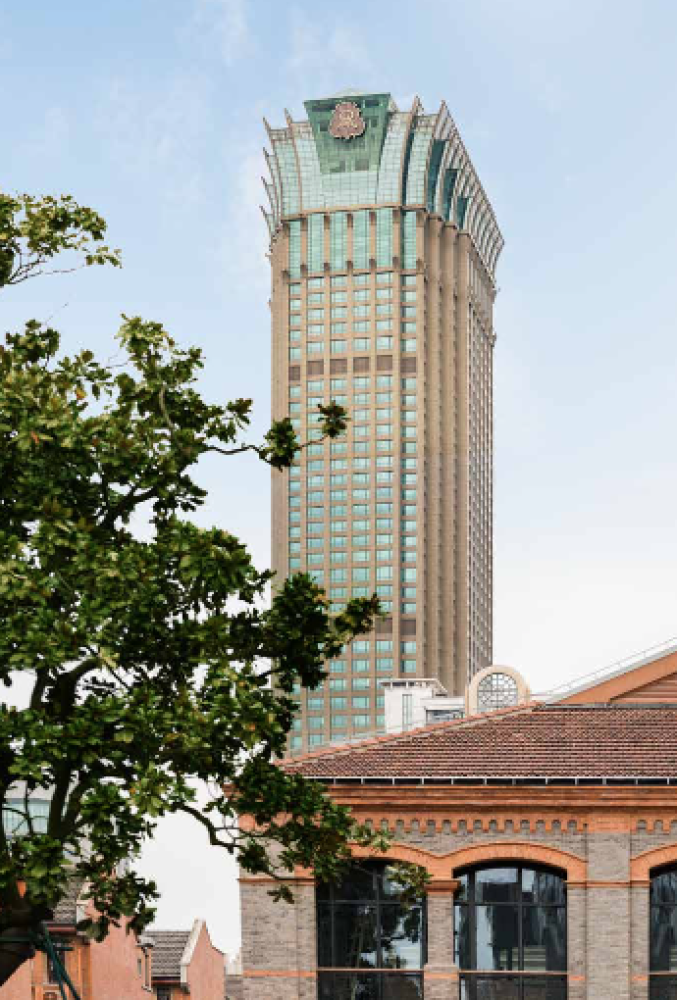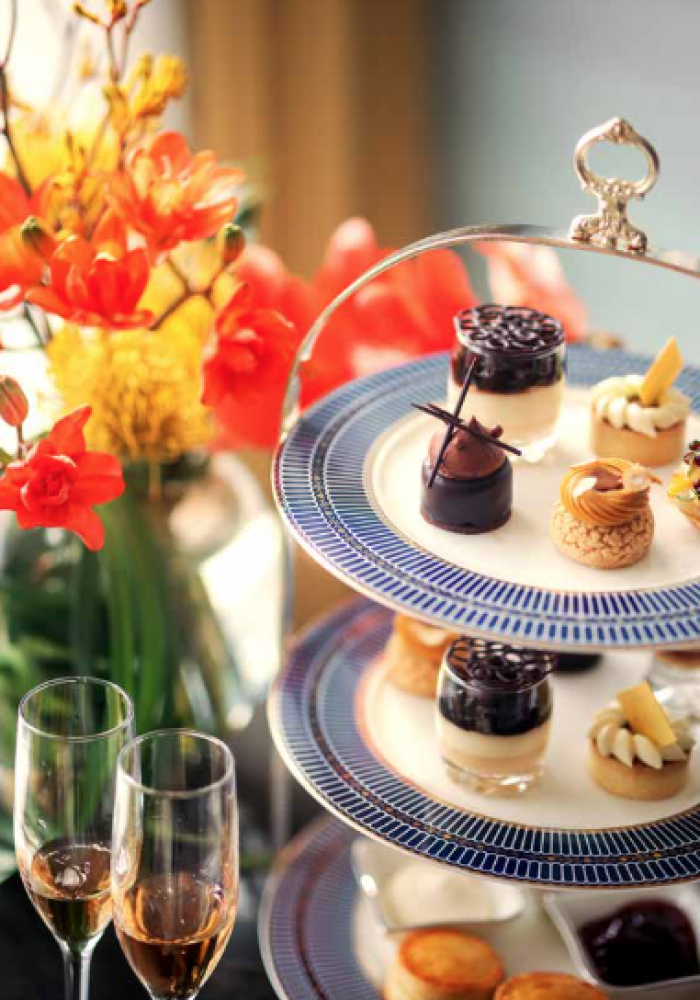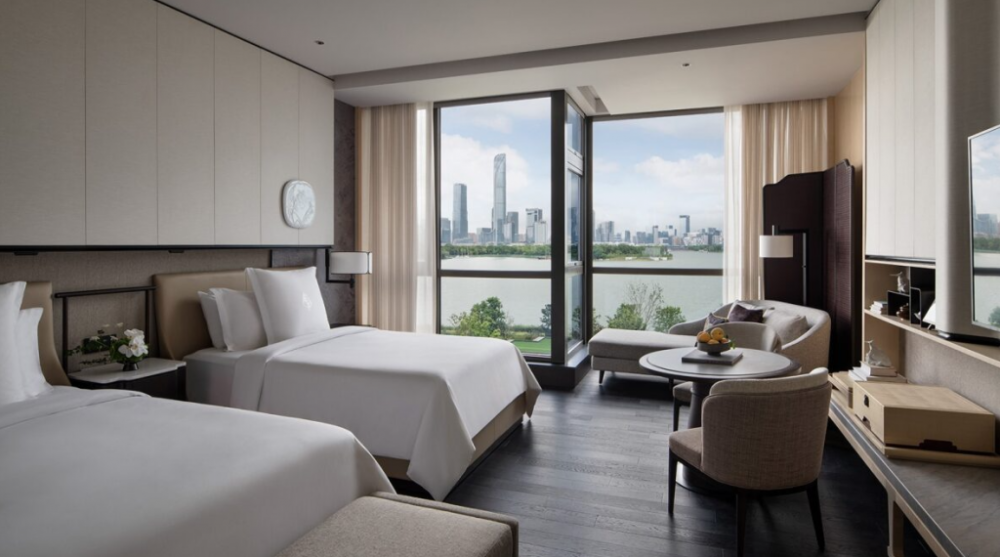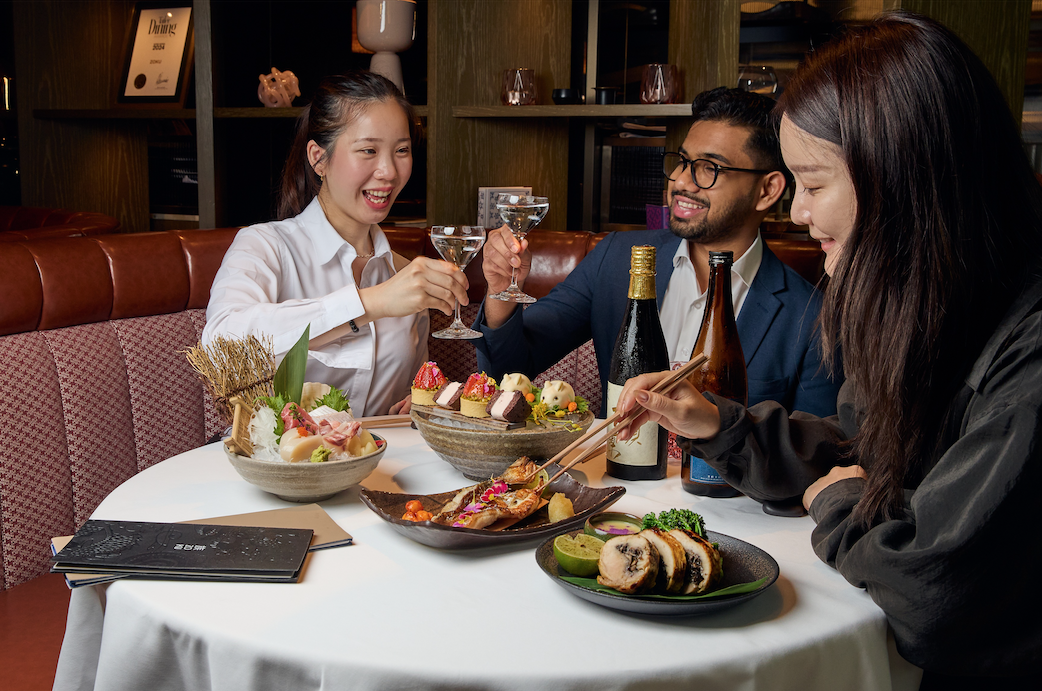A tale of two stays in China’s Yangtze River Delta
Jan 26, 2024
Two addresses in China’s Yangtze River Delta offer stylish stays, each with a distinct touch of their locale combined with stellar hospitality. Stephenie Gee reports
The St. Regis Shanghai Jingan

Jing’an translates from Chinese to “peace” and “tranquillity”, but the scene at ground level is not all placid as this charming neighbourhood in Shanghai’s downtown might have you believe. There are moments, like in the majestic Jing’an Temple, where China’s largest jade Buddha is housed, or on the lush garden trails of the Jing’an Sculpture Park. Then there are others: cars and bikes whiz by at breakneck speed; street vendors shout out at all hours of the day, peddling their wares; and elegant shoppers emerge from nearby stores like Dior and Louis Vuitton laden with bags. The contrasts that define this very city are especially pronounced in this part of town. And sitting in the heart of it all, ribbed in gold and rising 68 floors above the street, is The St. Regis Shanghai Jingan.
Stepping into its lavish lobby, with leather Chesterfields and crystal chandeliers juxtaposed with antique calligraphy, gold-foil silkscreens and contemporary Chinese paintings (and perfumed with the familiar, uniform scent of St. Regis hotels around the world), you feel immediately far removed from the city’s hubbub. No more so than when you’re escorted up to one of the 491 rooms, which as St. Regis founder John Jacob Astor IV envisioned, feel like a home away from home, decked out in soft shades of Wedgewood blue, primrose yellow and pearl white. The plush carpets and sleek marble bathrooms are a classic of the brand, while traditional Chinese-style lacquer cabinets and porcelain vases add a nice local touch. But the best part is the full wall of windows. From my Manor Deluxe Room on the 59th floor, I could see for more than 10 kilometres. Below me, in the near distance, were the 141-year-old terracotta- hued Zhangyuan shikumen houses. The nautilus-shaped Shanghai Natural History Museum, with its lattice façade, cut a striking contrast beyond them. And farther still, over in skyscraper-central Pudong by the winding Huangpu River, stood the iconic Oriental Pearl Tower.

The hotel itself is no less spectacular: the on-site gym and pool are among the best you can find in any resort. The signature St. Regis Iridium Spa offers a dazzling menu of treatments with Chinese touches (nothing eases your day’s stresses like a traditional Chinese foot massage). And there are countless opportunities to sate your appetite – Social for easygoing bites, Seki-tei for teppanyaki, refined Chinese flavours at Yan Ting, and afternoon tea in The Drawing Room.
But where I think The St. Regis Shanghai Jingan really stands apart is in its service. The butlers are, as per the brand’s standards, stellar and part and parcel of The St. Regis experience. No request is too small or unattainable no matter the hour of the day, whether it’s putting together the itinerary for your stay, finding you a last-minute souvenir for your loved one, or unpacking – and packing – your bags. Which, if you’re like me, can feel like a bit of a chore, just another task to check off the list before the real adventure begins.

Earlier this year, St. Regis Hotels & Resorts in Asia-Pacific launched “House of Celebration”, a series of limited-edition reimaginings of the timeless and storied rituals of the Astors that draw from haute couture runways with a distinct theme for each of the four seasons. When I visit The St. Regis Shanghai Jingan, the theme is autumn’s “A Celebration of Culture”. The highlight of the programme – alongside an exclusive Shanghai Tang trunk show – was the “Packing in Style” masterclass. Over afternoon tea, I learn that a slew of nifty accoutrements coupled with smart strategies make for easy, stress-free packing: tissue paper works wonders for protecting your ornamented pieces (embroidery, beads, sequins) from being snagged or pulled. Interlace your trousers with other garments like shirts and jackets to reduce creasing. Place the heavier items like shoes, toiletries and electronics by the wheels for an even weight distribution and to avoid crushing your lighter ones. And loop your belts inside collars to keep them stiff and save space.
As for the part of your trip when you actually leave the hotel, it’s within a short driving distance of many of the city’s must-see spots like the centuries-old Yu Garden and its centrepiece, the Exquisite Jade Rock (don’t forget to also stop by for some xiaolongbao at the Nanxiang Steamed Bun Restaurant); arts and crafts enclave Tianzifang; Nanjing Road Pedestrian Street for shopping; and of course, the Bund (it’s best to experience it from above, away from the crowd and chaos – the rooftop bars at Shanghai EDITION and W Shanghai, also under the Marriott portfolio, are a good place).

When evening rolls around and you’ve exhausted yourself after a day spent out and about, unwind over a drink (or two) in The St. Regis Bar. Its Violet Hour Martini is, per usual, excellent. Though I’m partial to the Bloody Mary, the vodka-laden cocktail that has been synonymous with the brand since 1934, when bartender Fernand Petiot introduced the “Red Snapper”, which would later be renamed the Bloody Mary at the King Cole Bar in The St. Regis New York. Since then, the brand has proudly taken on the drink as its signature with each outpost boasting its own variation. The version here is called Mary Jing, with homemade fig vodka, yellow tomato juice, osmanthus honey and lemon.
After dislodging myself from the bar, I make my way back up to my room. Inside, the lights are already dimmed. There’s a bath drawn and ready. My bag is packed by the door and my bed turned down, tucked in a corner is the St. Regis butler teddy, with a hot tea and chocolates on my bedside. It feels like home – only better.
Also see: What does the future hold for mountain luxury living?
Four Seasons Hotel Suzhou

At their best, hotels are both a reflection and an extension of their destination, a window into a place waiting to be explored. Most importantly, they have a sense of place, grounded in the neighbourhoods they are found. So goes the ethos of the Four Seasons, whose hotels (there are more than 100 spanning 47 countries) have, since the brand’s inception more than six decades ago, remained individual and styled to reflect their specific locations. But even so, when your car pulls up to the grand porte cochère of the Four Seasons Hotel Suzhou – newly opened in partnership with Sun Hung Kai Properties – you could be forgiven for forgetting momentarily just where you are.
Just a stone’s throw to the west of Shanghai (an hour by car and 23 minutes by bullet train), Suzhou feels a world away. Lest we forget, this is the city that the Venetian merchant and adventurer Marco Polo once described as “heaven on Earth”. But any lapses in memory are quickly remedied by homegrown hints scattered throughout the 9-hectare private island retreat on Jinji Lake: penjing (the ancient art of miniature landscapes) accents, intricate latticework and su xiu (the most revered of the four main styles of Chinese embroidery) adorn walls and furnishings like pingfeng (folding screens) and cushions.

The gardens here are another talking point, landscaped to resemble Suzhou’s UNESCO World Heritage classical gardens, whose origins can be traced back to the 6th century BC when the city was founded as the capital of the state of Wu. Recreations of nature in miniature (ponds and streams represent lakes and rivers, rocks symbolise mountains and plants stand in for forests), they served as a retreat for the cultivated, who believed the gardens, through their artistic perfection and meditative nature, could help cultivate an even temperament.
While that is yet to be determined, what I do know is they make for a lovely morning walk. Your eyes are never at rest. Scenery changes with every step, in the manner of traditional Chinese scroll paintings, which unfurl in a continuous narrative. Surprises await around every corner, the garden only revealing its secrets the longer, and more slowly, you wander through it. At the Four Seasons, there are cushioned rattan chairs dotted along the main pathway for those who wish instead to take in the peace and serenity of it all while sitting down to a cup of tea.

The Four Seasons Suzhou encourages a tranquil calm in its guests so even from inside, you can see the greenery (though if you prefer city views, there’s that too). It’s an effect that can be credited to the expansive windows that feature on every level, including, of course, the accommodations, which run the gamut from open-plan guest rooms to suites and standalone villas. In my room – overlooking Jinji Lake, backdropped by the city skyline – local touches abound, just as throughout the rest of the hotel. The bathroom takes into consideration its setting – after a blustery walk by the lake, you’ll want a good scrub, so the showers have top-notch water pressure for supreme reinvigoration. The details are there too, but imbued with an added layer of opulence that the Four Seasons is known for: the Acqua Panna, the Frédéric Malle magnolia-scented toiletries, the Claybrook freestanding tub. It’s the plush bed, though, fitted with silky-soft sheets that really has me tempted to call it a night and stay in.
But I’d have missed out if I did. The beauty of Suzhou lies just beyond the gates. Pingjiang Road, with a history dating back to the South Song Dynasty, takes you through Suzhou’s monuments and architectural marvels. Cruise along the lighted canal of the prosperous Shantang Street or take in a traditional Kunqu opera or Suzhou pingtan (musical performance) in one of the many teahouses lining the water’s edge. But Tongli, the historic water town of over 1,000 years in the city’s south, comes highly recommended, with its whitewashed houses, black-tiled roofs, cobblestone pathways and willow-shaded canal views. It’s best explored the traditional way: aimlessly, with no agenda.

Nights in Suzhou can get surprisingly chilly, so dinner is back at the hotel. Choose Yun He if it’s a casual affair you’re looking for. Or head upstairs to Jin Jing Ge, the resident fine-dining restaurant where executive chef Zhang Xiaocheng – formerly of the Michelin-starred Jin Sha at Four Seasons Hotel Hangzhou at West Lake – turns out the best of Jiangzhe cuisine, including a succulent crispy-skin chicken, melt-in-your-mouth cherry pork, and stewed “lion head” meatball (the lunch dim sum is quite spectacular, too, I hear). Tie it all up with the gorgon fruit, or “chicken head rice”, sweet soup. It’s a local favourite, I’m told, and very expensive, in part because its harvest is a particularly laborious process (all by hand), and in part because of its nutritional profile.
After you’ve lingered over your meal, the affable staff don’t hesitate to wish you good night before you retire to your little private oasis. The Four Seasons Hotel Suzhou is a place to connect – with nature and with yourself. Eventually, in bed, after a nightcap and encircled by blues and greens, that’s exactly what you’ll do.
Also see: The Ellinikon is set to transform Athens





























